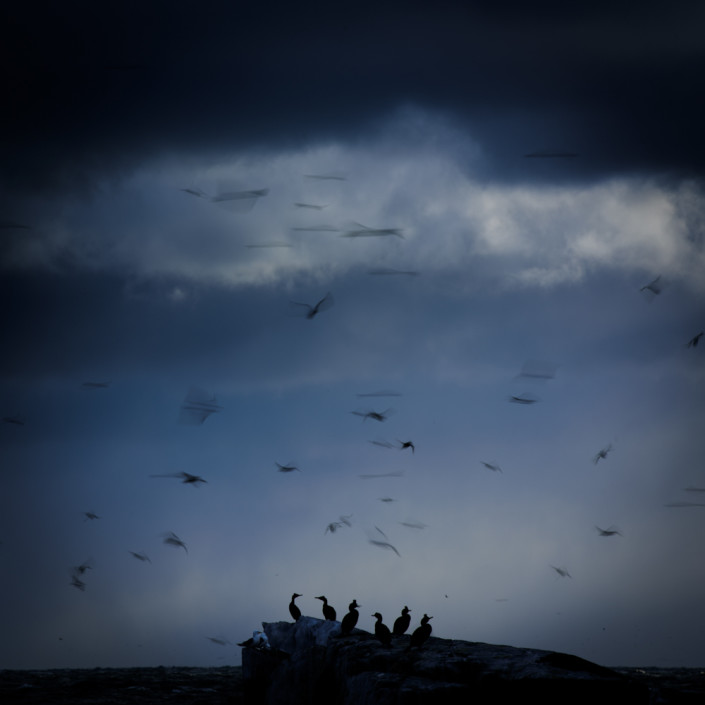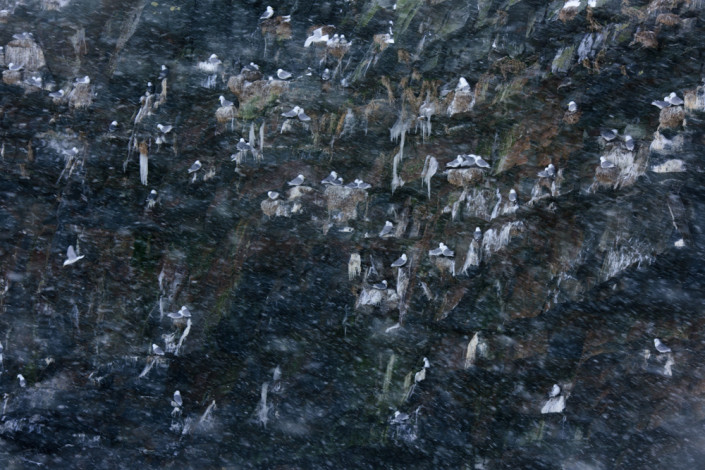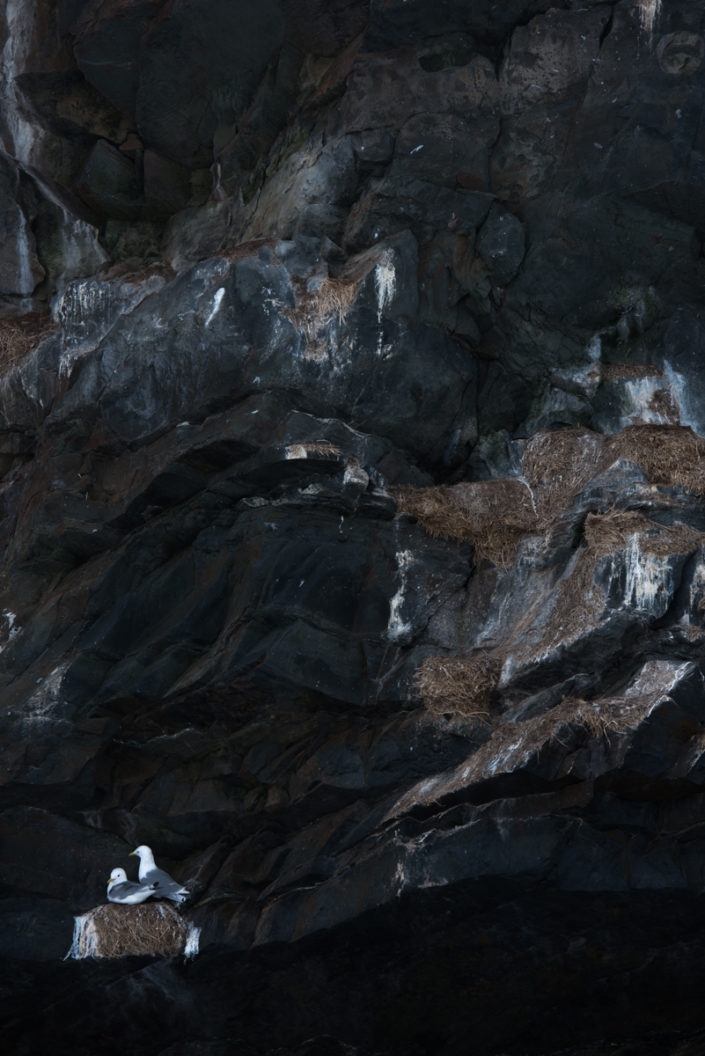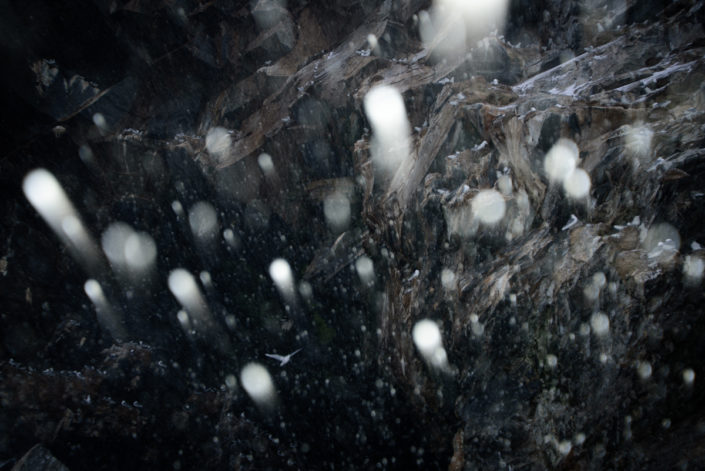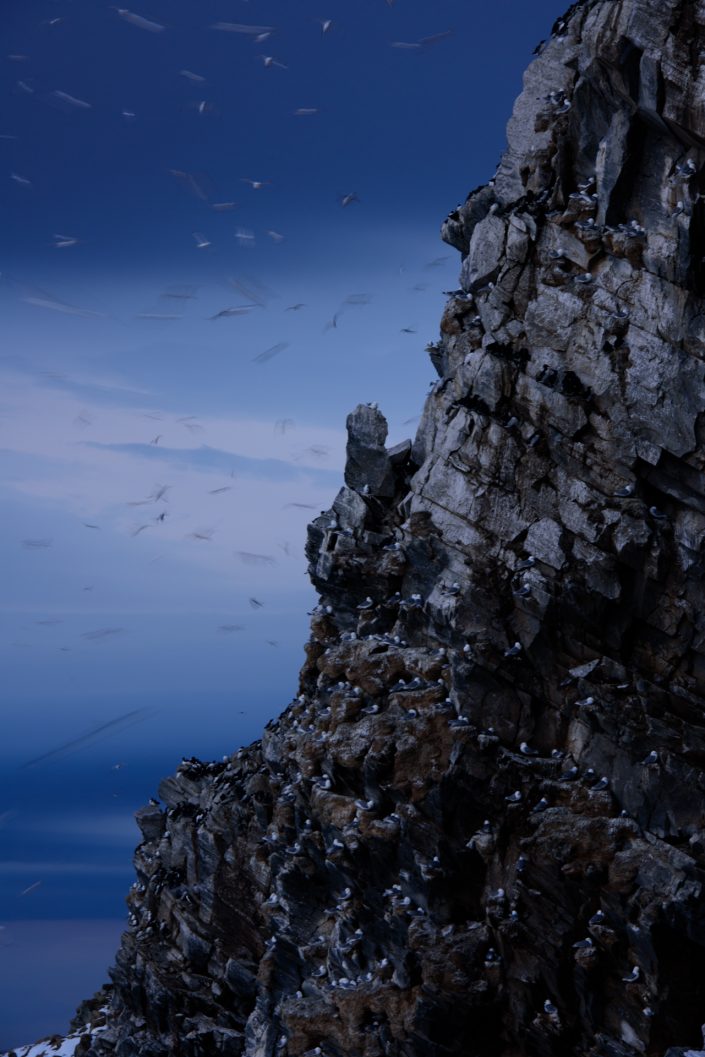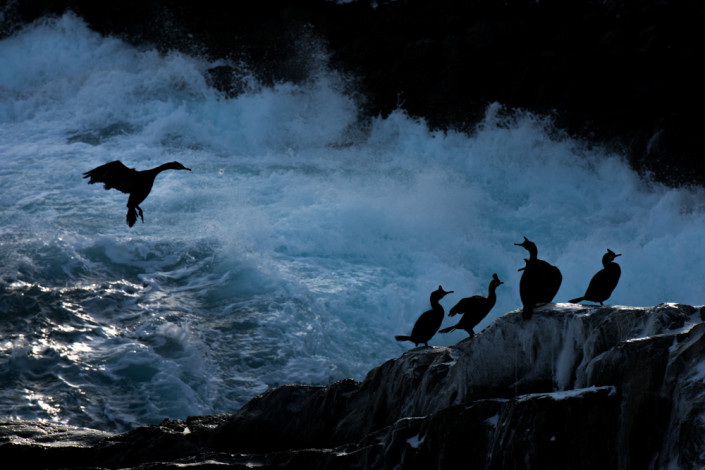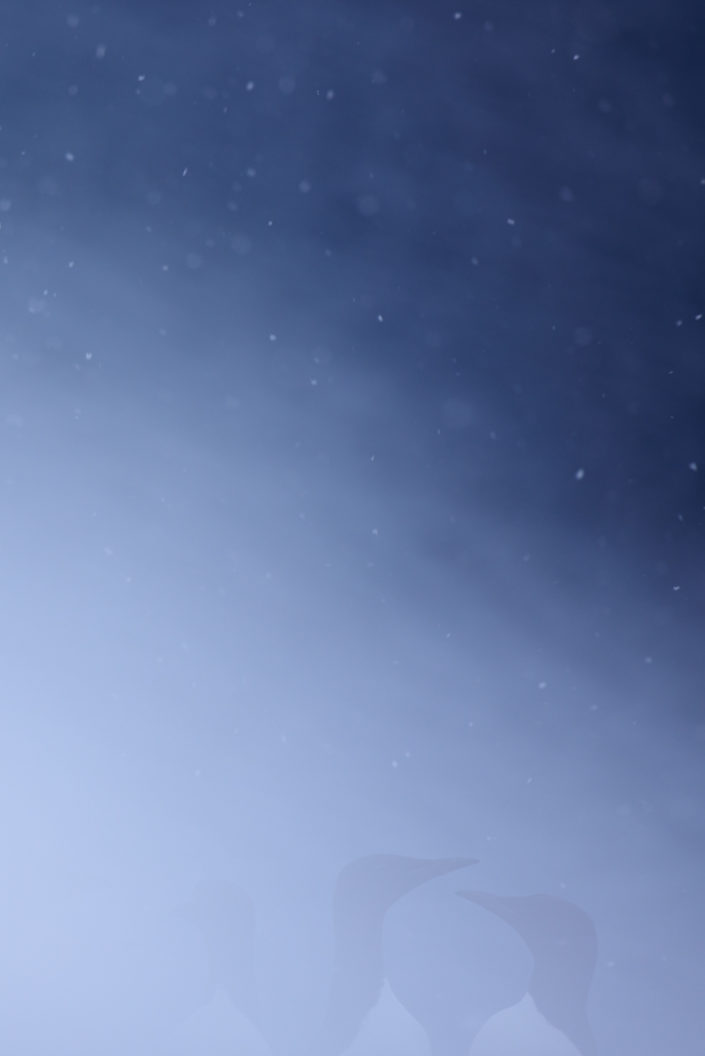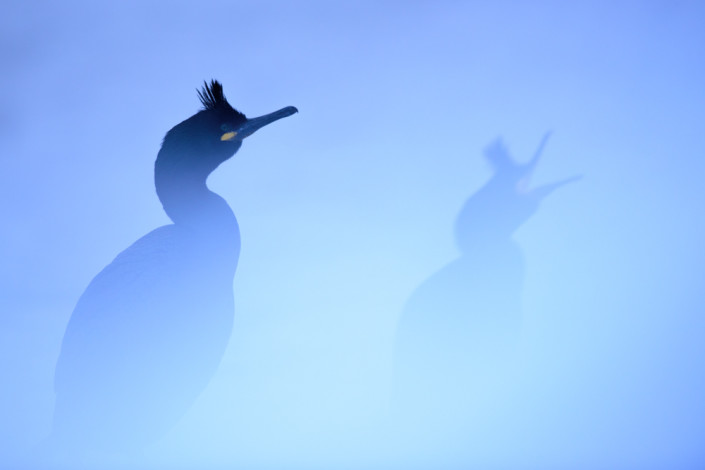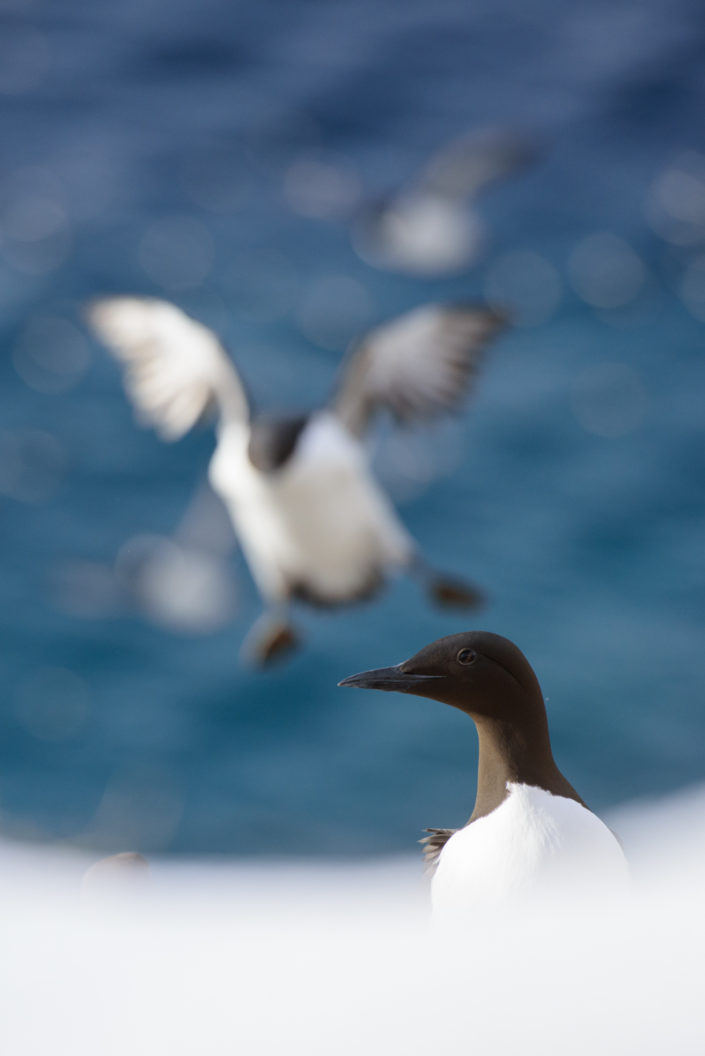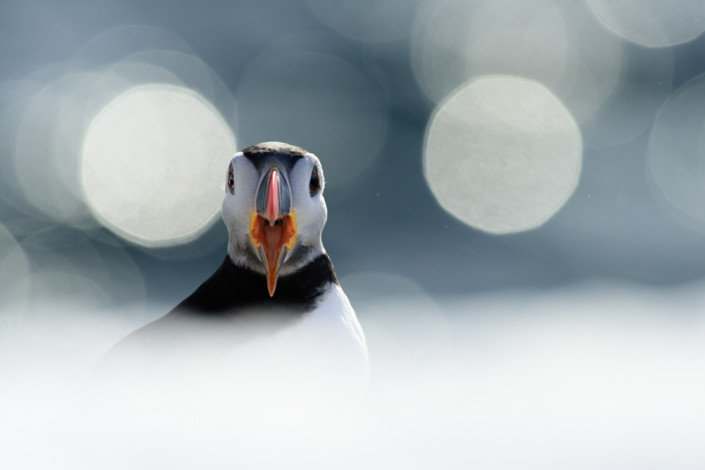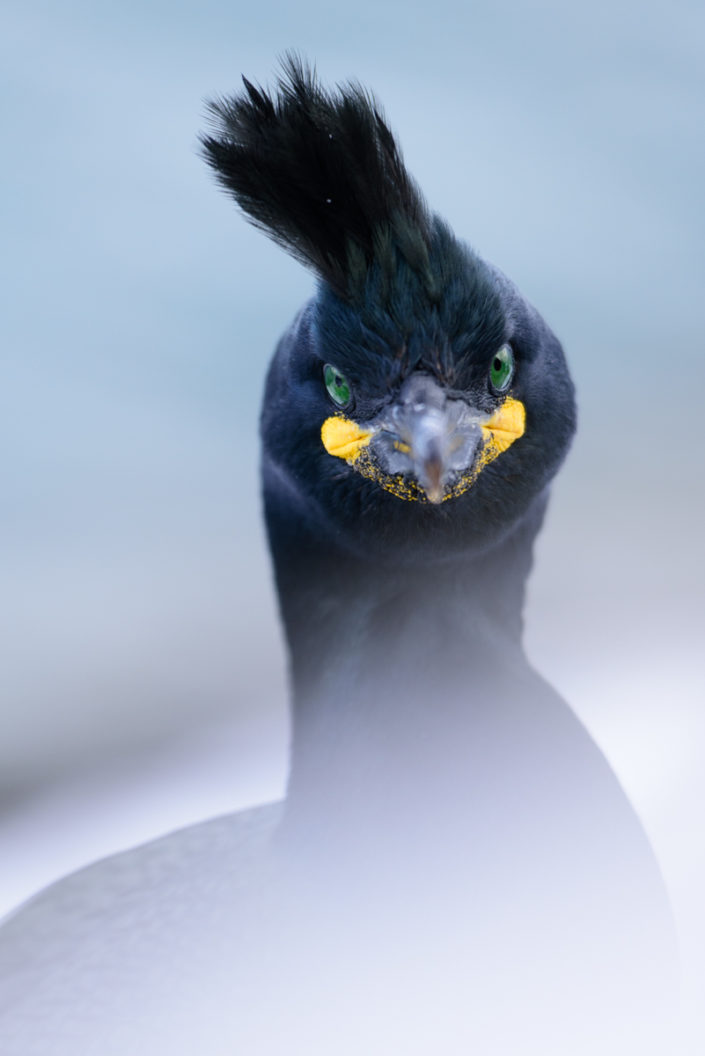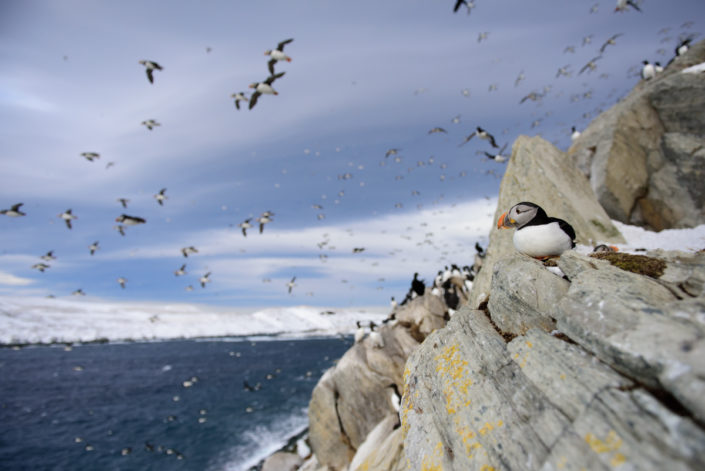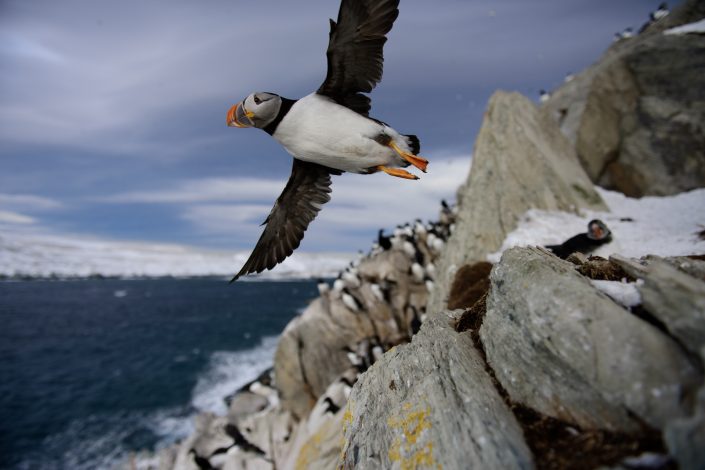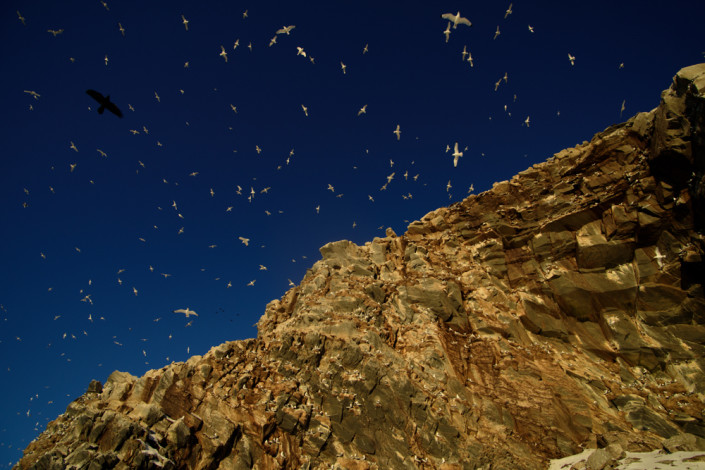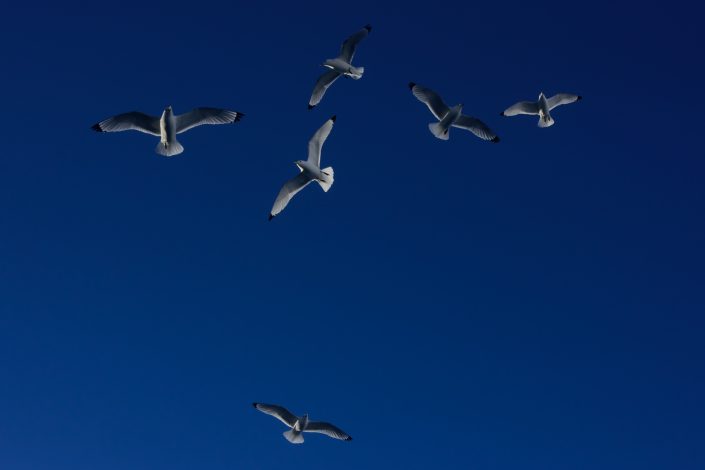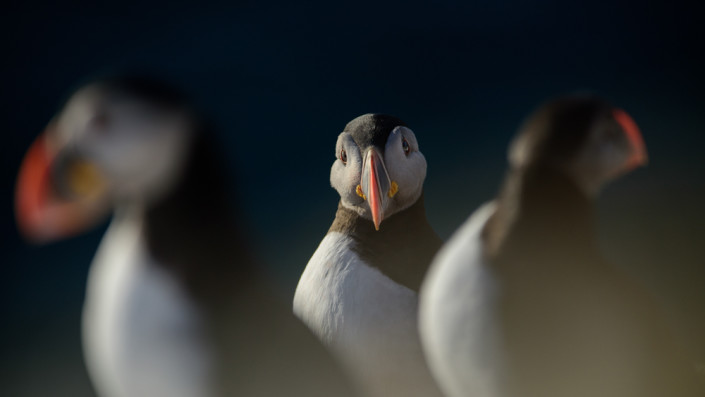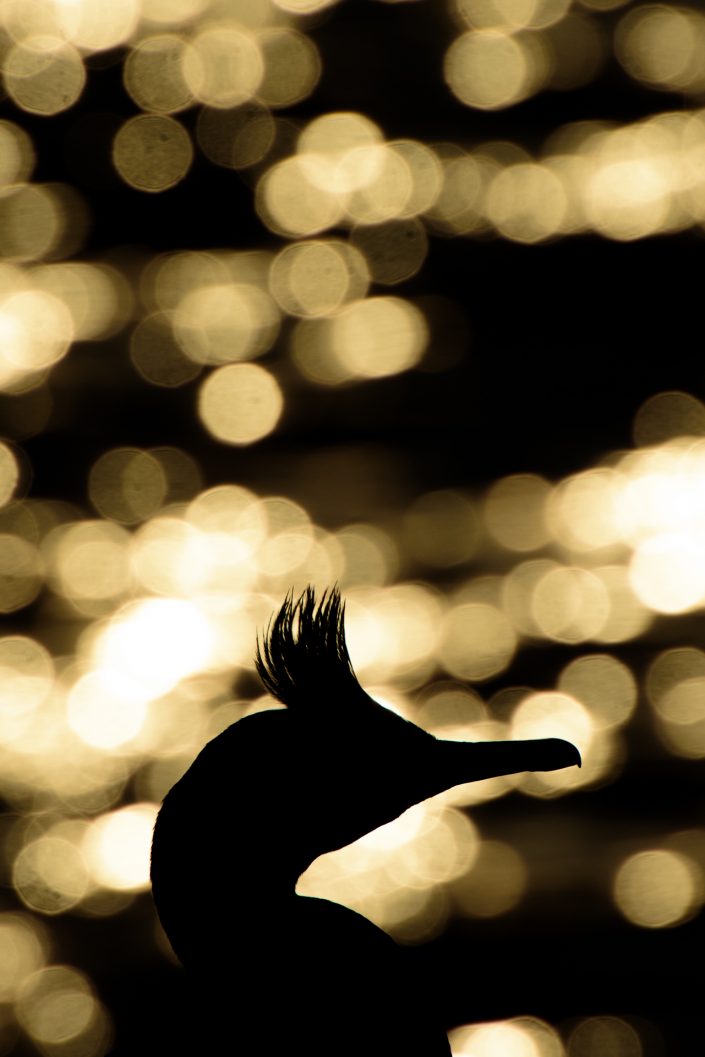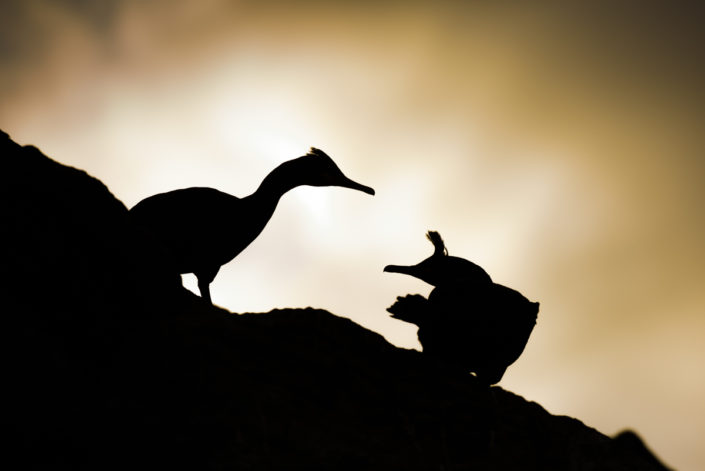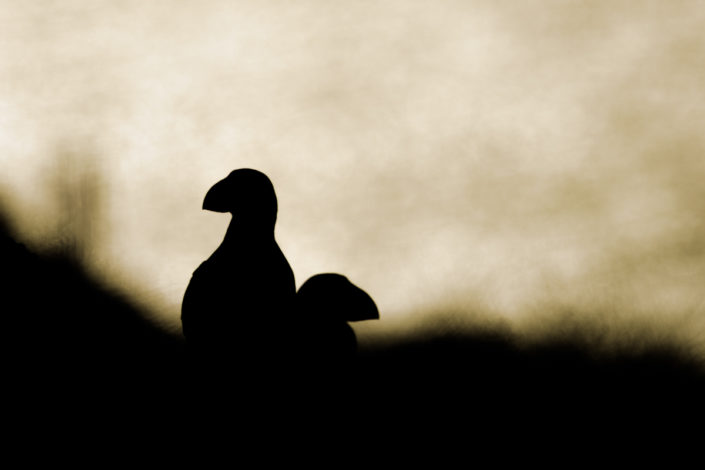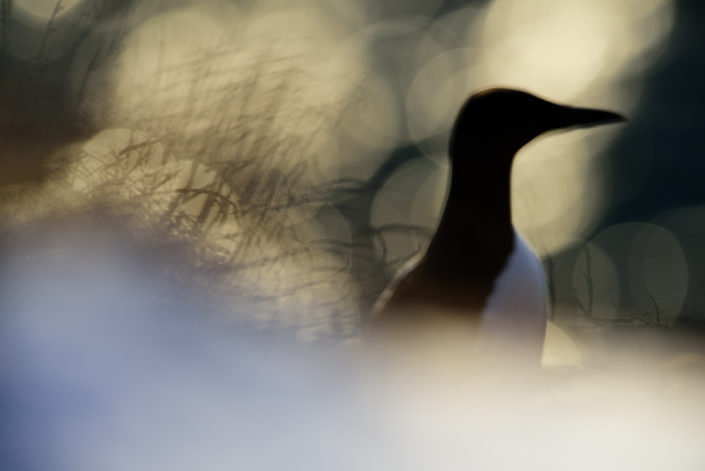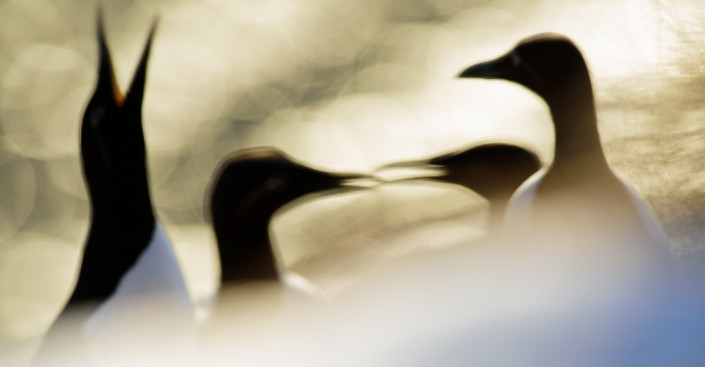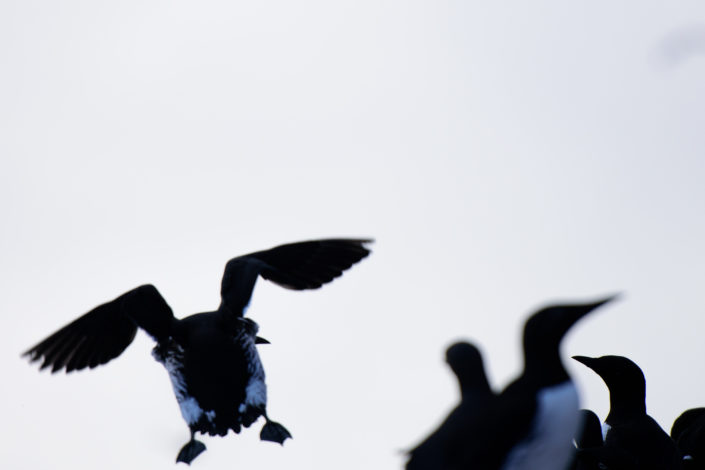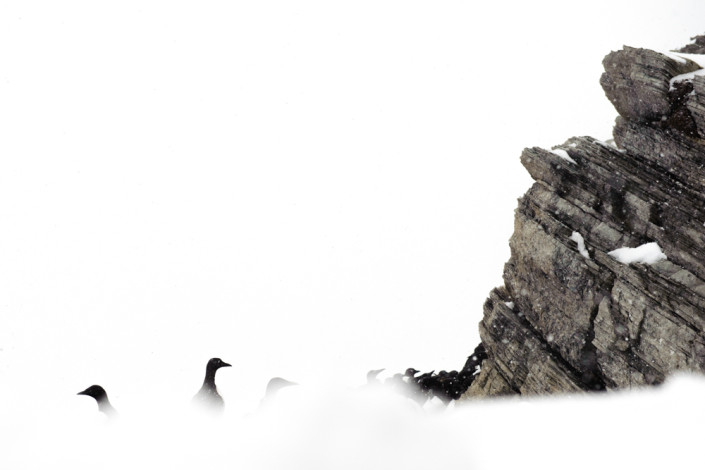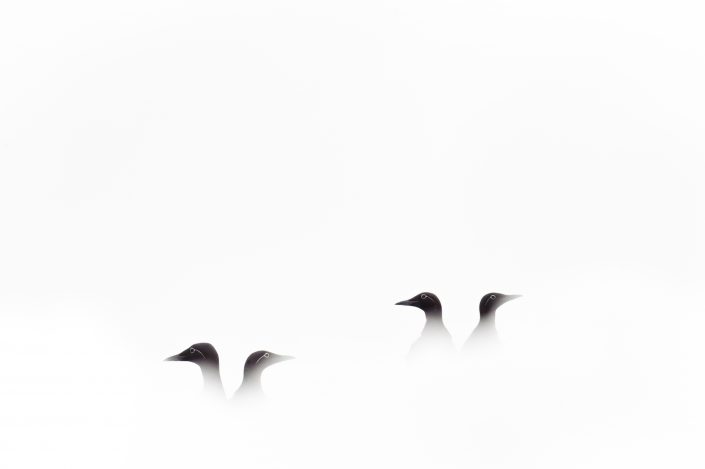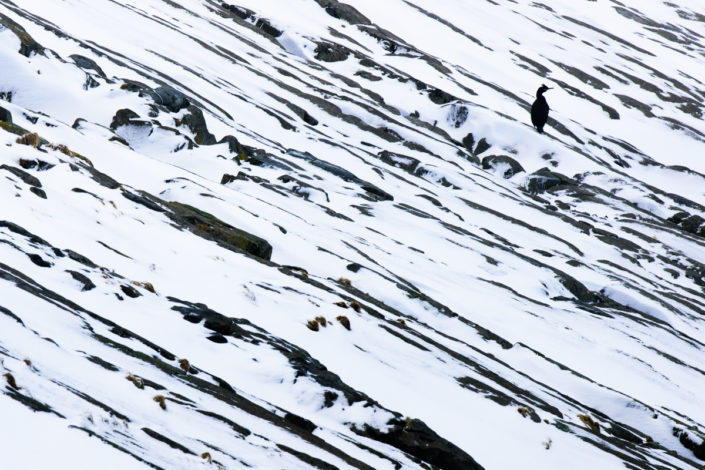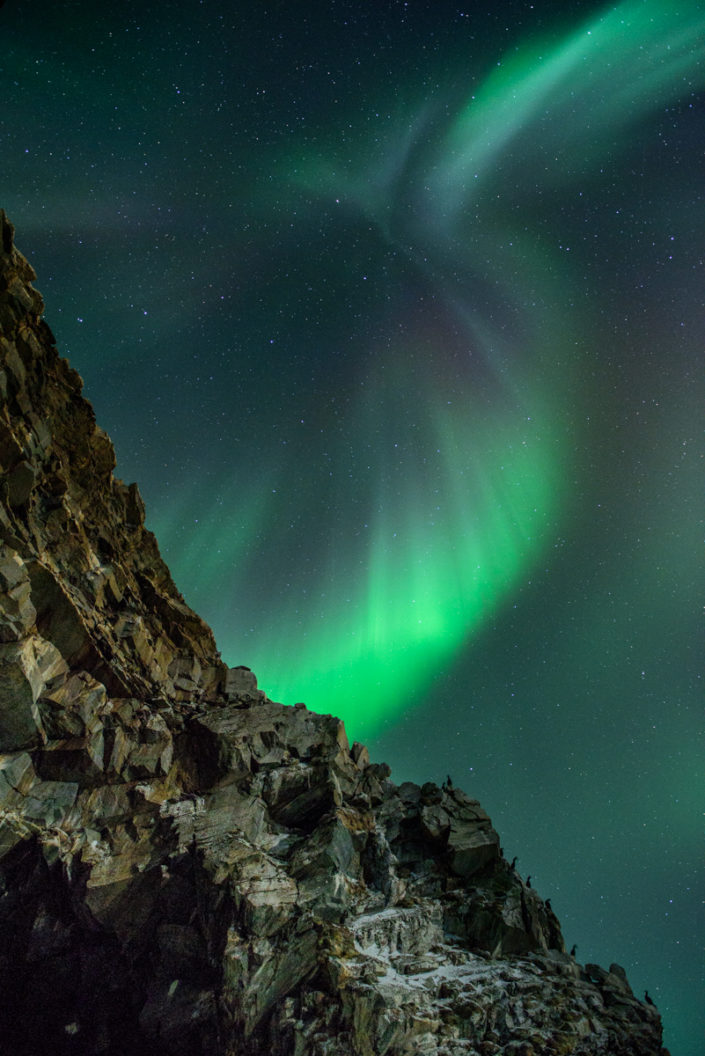The moment I close my eyes and think about Hornøya, a smile is automatically drawn on my lips.
Pictures of the pristine-white island cross my mind, with its volatile and frantic weather changes or the noise of
thousands of seabirds fluttering above my head still bringing inner peace to my mind,
Located at the Barents Sea, at Europe’s easternmost point, Hornøya is a small, uninhabited island with only one man-
made object on it, a lighthouse sitting at its highest point at 65 metres above sea level. Home to majestic king eiders,
adorable puffins, elegant guillemots, kittiwakes, shags, and sometimes rare migrants like the golden oriole or the pallid
harrier, among others, it has proven itself as a sanctuary for birds.
When I left Germany I did not have high expectations. In fact, I had none. I was just happy to have joined the team in
the last minute, but also unconfident and worried: “Would I have the right gear?” “Were my lenses big enough?” “Was I
mature enough – photographically speaking – to face the challenges ahead?”.
But once on the island, and after three hours of wandering through the snow, carrying goods, gear and water to the
lighthouse with the other nine photographers, I realised I had seven days to unleash my creativity. If there is one thing
that that island gives you it is total freedom, the only limit while on it is your own resourcefulness. The North gave me
its weather, its light and its wildlife, allowing me to lose track of time and simply let go while enjoying its nature.
In the first hours, we explored the cliffs through the paths that wave in and out of rocky outcrops, looking for key
spots to take our first pictures and aiming at causing minimal disturbance to the birds.
After a few days, we saw the first puffins slippering through the snow covering the rocky land, catching the eye of us
foreigners with their bright and colourful beaks, their waddling-like walk and seducing us with their games. Some
focused on their fights, quite fierce given their cute looks, and although I unsuccessfully tried once or twice to capture
their disputes, my attention was driven to the scenery, the ever changing light, and the raging sea.
The guillemots, on the other hand, might not be the most charismatic or the most exotic birds, but their elegance and
simplicity made me forget everything around me, and picturing them turned into my main amusement on the island.
Today, I still have a smile on my face as those memories take over my thoughts. Hornøya is a true treasure trove, and
my only hope is that it stays the same, untouched, with its bird cliffs teeming in activity while visitors like me keep
enjoying the outstanding view and the striking arctic scenery.

